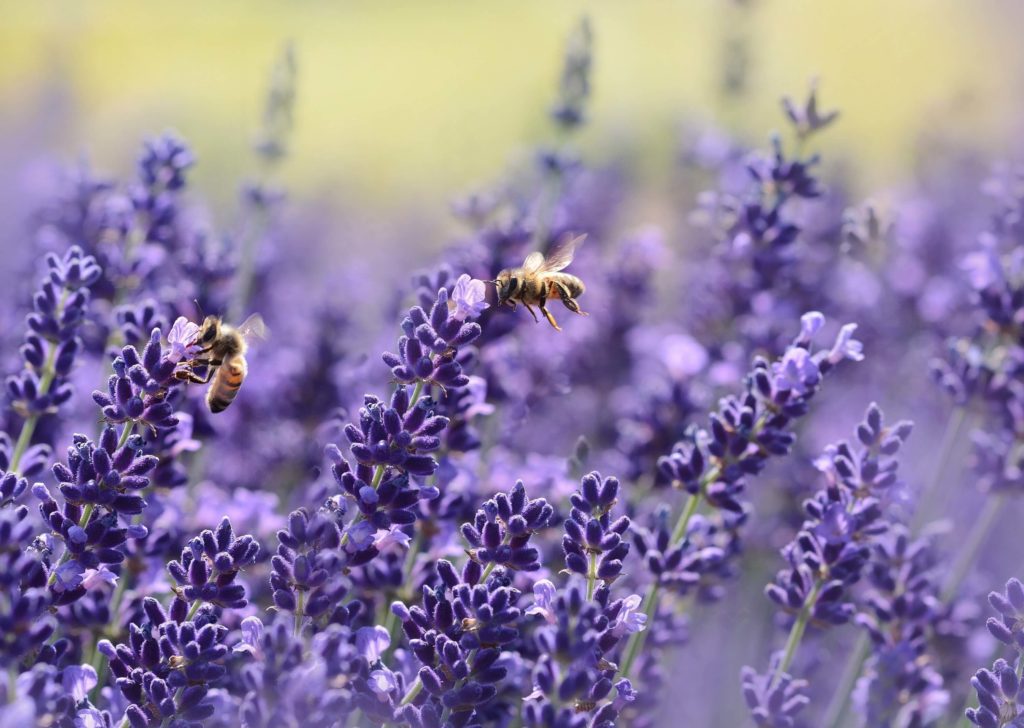The sound of bees going about their business, buzzing gently from one flower to the next surely conjures images of blue skies, green grass and long summers days. Bees are incredibly important pollinators, essential to the ongoing health of our ecosystems but sadly for a variety of reasons many species of bees are in decline. Thankfully there are lots of innovative ways that we can help to save our native bee species, and you don’t even need to own a garden!
If you’d like to know more about how you can help contribute towards a bee-friendly future our team is more than happy to help; just drop by or give us a call on 01273 770966.
You can also contact us with any questions you have about our range of bouquets and plants – we’d love to hear from you!
Bee friendly flowers and plants
Like all animals, bees need access to three essentials; food, water, and shelter. The sugars found in the nectar of flowers provides the bees with their energy source, whilst proteins and essential oils are found within the pollen. Planting or potting flowers which bloom at different periods throughout the year ensures that the bees have year round access to food.
Here are some of our favourite indoor and outdoor flowers for bees, including a selection of the best plants, wildflowers and shrubs:
Honeysuckle
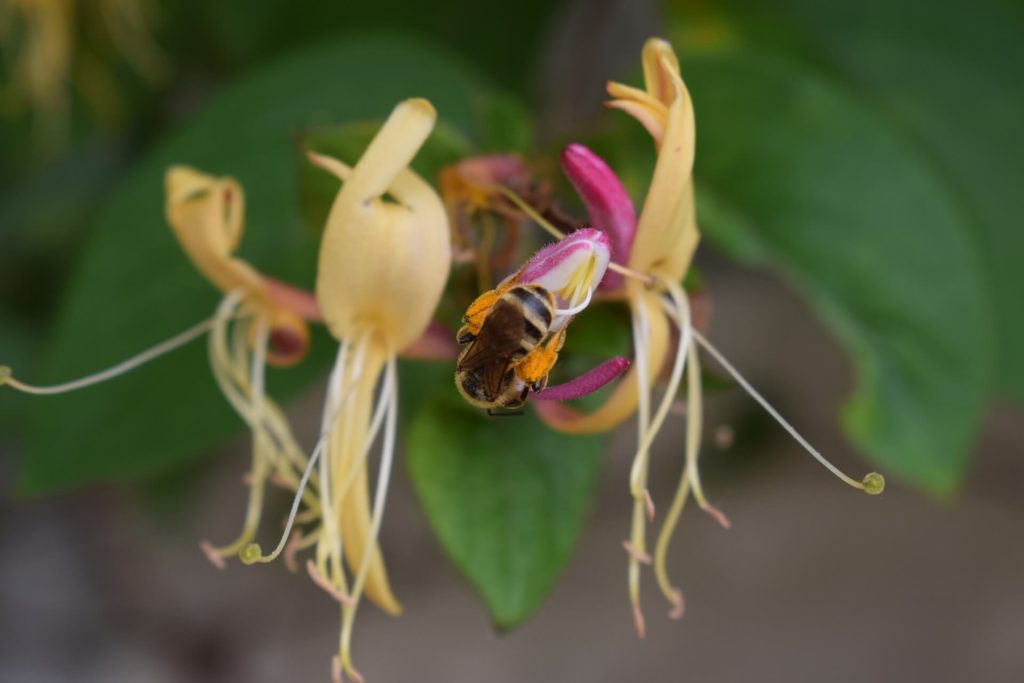
Plant type: Perennial plant
Can be grown: Outdoors
Bloom time: Early spring through summer
Why bees love them: Highly fragrant and one of the earliest flowering plants to bloom in the spring, the long tubular shaped flowers are irresistible to many pollinators including long-tongued bees such as the garden bumblebee (Bombus hortorum).
Phacelia or ‘Bees Friend’
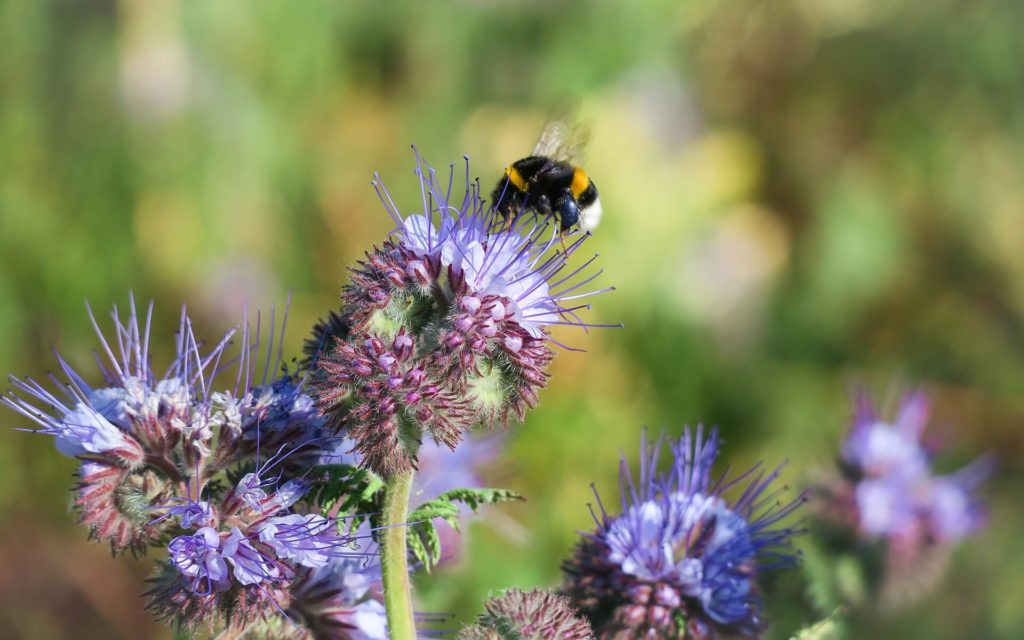
Plant type: Annual plant
Can be grown: Outdoors
Bloom time: Early spring through summer
Why bees love them: Heralded as the single most attractive plant for bees on the planet Phacelia is particularly adored by the European honeybee (Apis mellifera), as well as short-tongued bumblebees such as Bombus terrestris and B. lucorum. Its blue flowers are abundant in nectar and pollen, and it has been widely used in bee generation programmes throughout Europe.
Monarda or ‘Bee Balm’
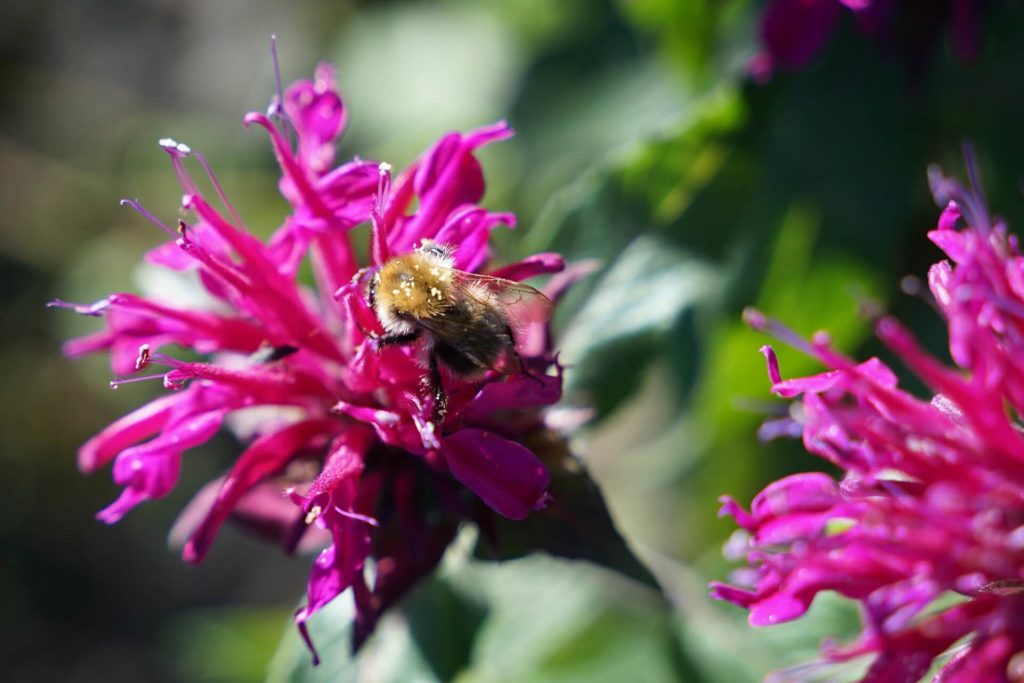
Plant type: Perennial plant
Can be grown: Indoors and outdoors
Bloom time: Midsummer to early autumn
Why bees love them: Easy to grow and aptly named, Bee Balm is highly visited by long tongued bee varieties. With a bloom period of around 6 weeks Monarda can be grown both indoors and outdoors in sunny areas, meaning it’s perfect for balconies, patios and even windowsills – just make sure the air is well circulated!
Sunflower
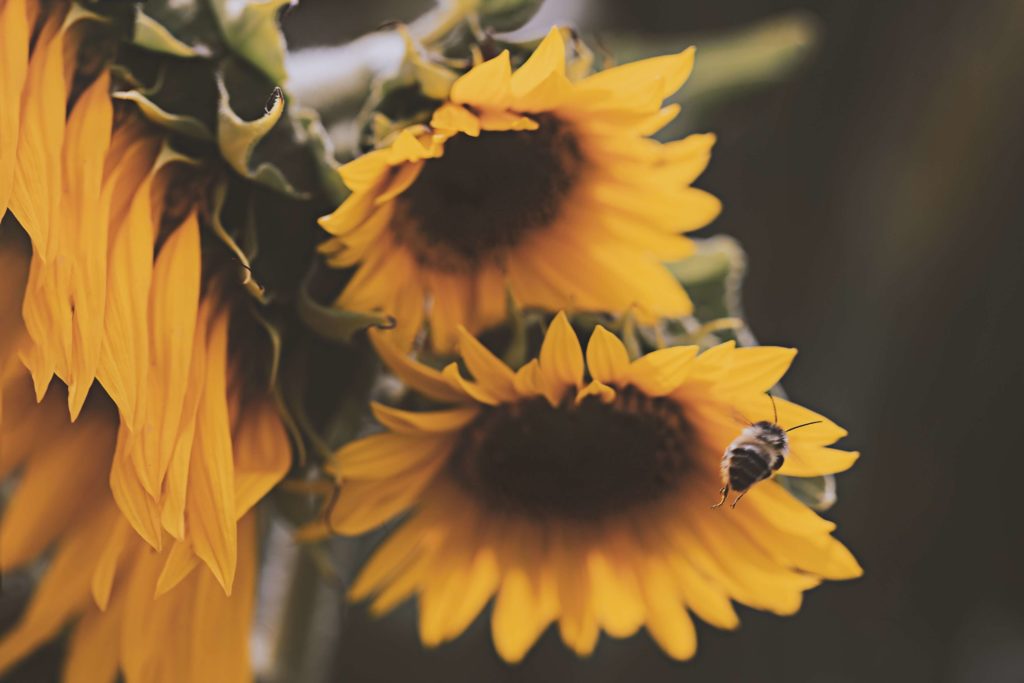
Plant type: Annual or perennial plant
Can be grown: Indoors and outdoors
Bloom time: Summer through autumn
Why bees love them: Sunflowers are popular with a wide range of bee species including honeybees, bumblebees both long and short-tongued and solitary bees. Varieties such as Lemon Queen are especially popular flowers for bees as they are more likely to branch, with one seed capable of producing as many as twenty flowers!
Snowdrop
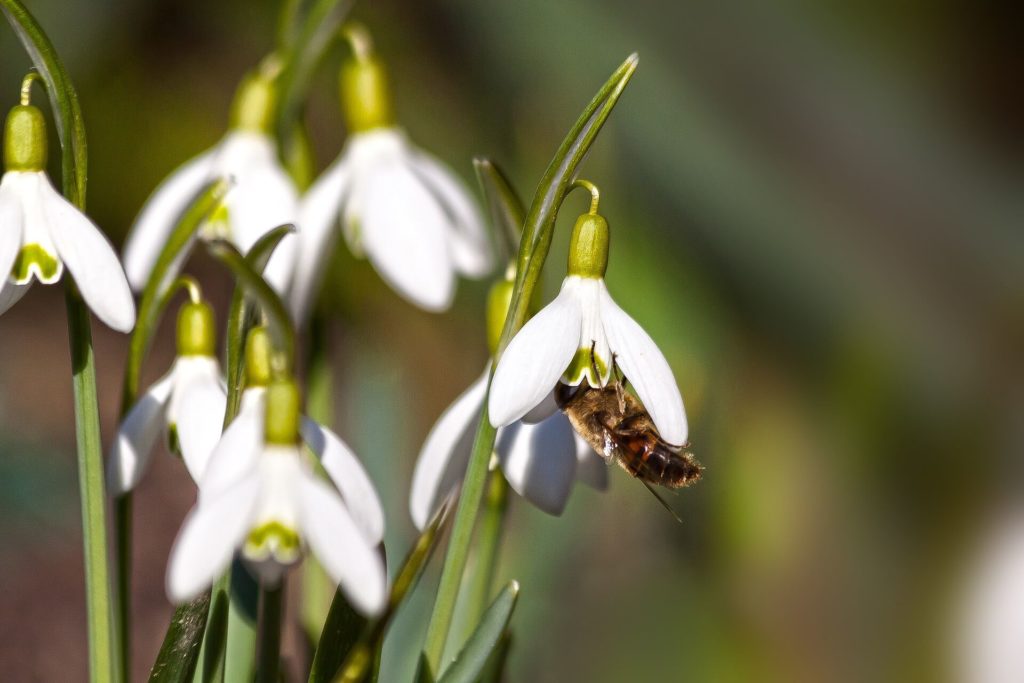
Plant type: Perennial plant
Can be grown: Indoors and outdoors
Bloom time: Winter to spring
Why bees love them: As one of the first flowering plants to bloom after winter, snowdrops are an essential source of nectar and pollen for a variety of bees when other food sources are hard to find. They can be grown both indoors and outdoors, and should be kept cool and shaded, ideally on a north facing windowsill.
Lavender
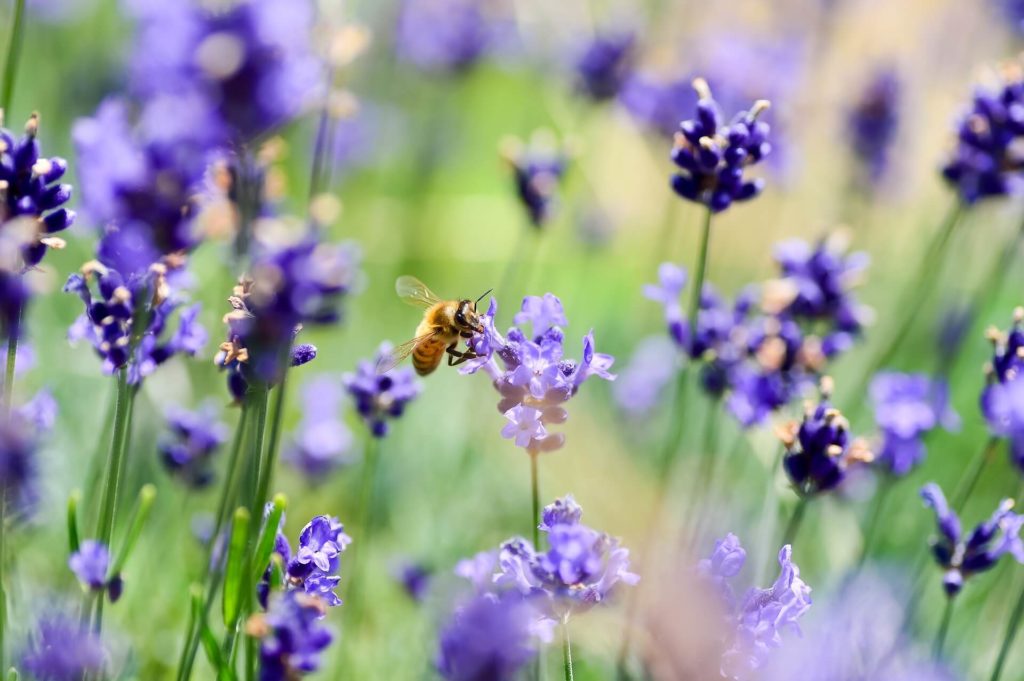
Plant type: Perennial herb
Can be grown: Indoors and outdoors
Bloom time: Summer (June, July, August)
Why bees love them: Its strong, fragrant smell and attractive purple flowers make Lavender a classic bee-friendly plant popular with a variety of bees. Lavender can be grown both indoors and outdoors even in poor, dry soil types.
Chives
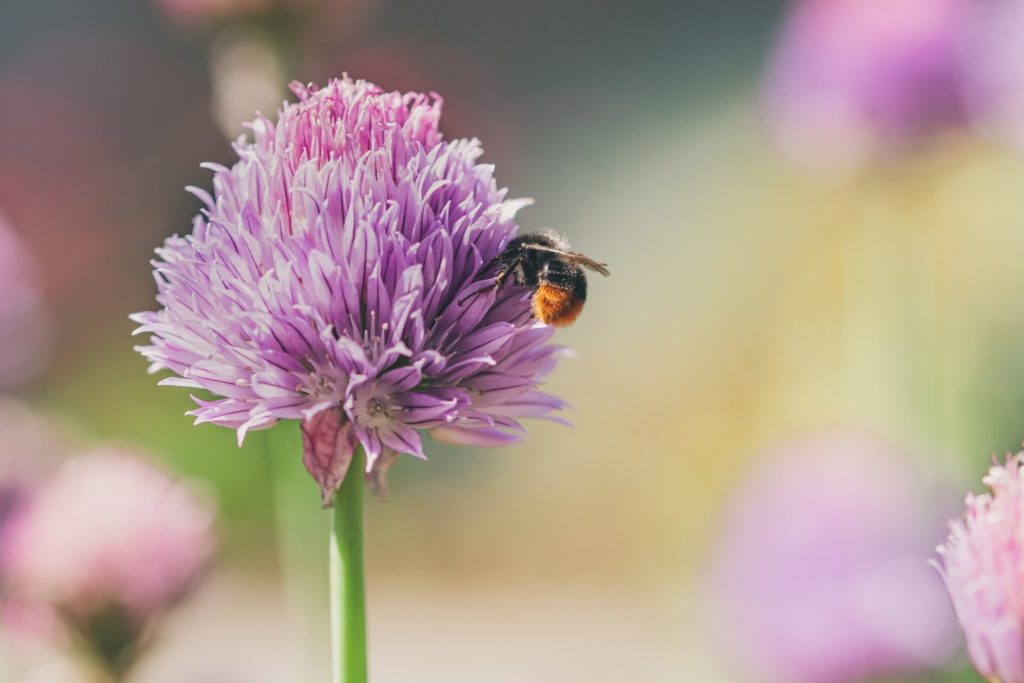
Plant type: Perennial herb
Can be grown: Indoors and outdoors
Bloom time: April-May
Why bees love them: These early-blooming pollen and nectar-rich flowers are a banquet for bees emerging from dormancy in spring and can be grown outdoors, or in pots and window boxes. Popular with bumblebees, honeybees, mason bees (Osmia bicornis) and leafcutter bees (Megachile).
Rosemary
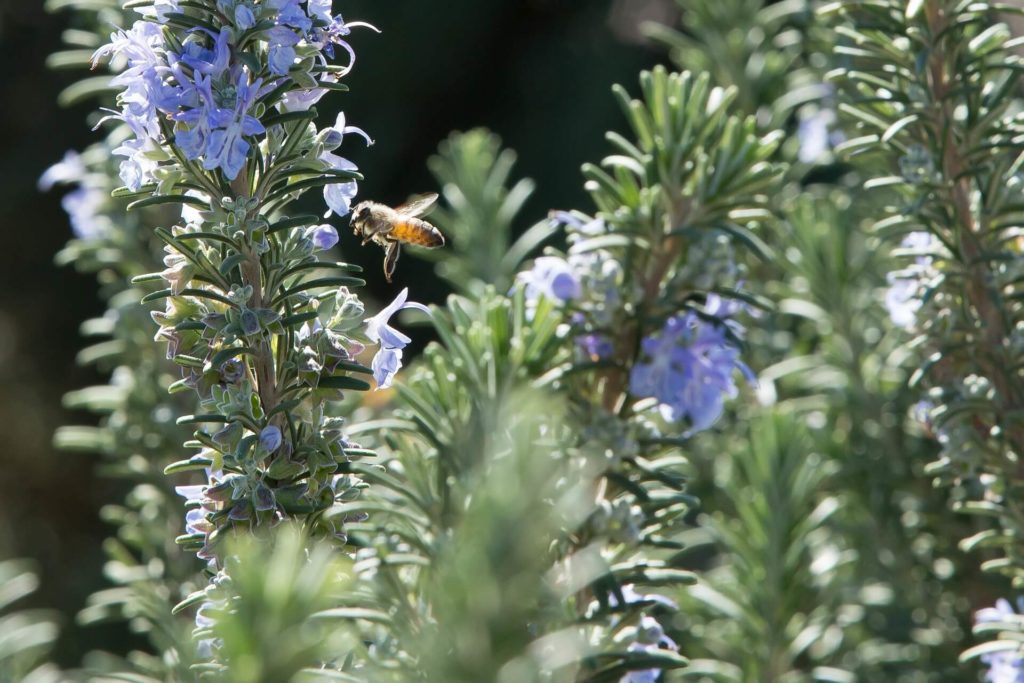
Plant type: Perennial herb
Can be grown: Indoors and outdoors
Bloom time: Spring
Why bees love them: A hardy all year round plant, Rosemary attracts a variety of bees including mason bees, bumblebees, mining bees (Andrena), and honey bees. It’s drought tolerant, and more than happy to live outside or on a sunny windowsill, porch or balcony.
What attracts bees to flowers and plants?
Flowers, wildflowers, plants, shrubs, bushes and trees come in all shapes and sizes and typically attract their own unique gathering of pollinators. So what makes a particular flower more or less attractive to a hungry bee?
Time of bloom
‘Bee season’ varies largely depending on temperature and the seasonal pattern of flowers. Whilst many bees appear to be predominantly active during the spring and summer months, many other bees are active from later winter onwards and are heavily reliant on early blooming flowers and plants for their nectar and pollen. Planting flowers and plants which bloom year round ensures a steady food supply for a wide range of bee species.
Flower size and shape
You’ll notice that the bigger bee species tend to gather on larger plants and flowers simply due to their supportive properties, whilst smaller bees will often head for equally tiny plants. This is a similar scenario when it comes to the shape of a flower, with long tongued bees favouring tubular shaped flowers with deep throated blooms whilst short tongued species seek more easily accessible rewards.
Colour
Bees can see blue, green and ultraviolet light but contrary to popular belief they can’t see red. Interestingly flowers and plants within the blue-purple spectrum typically produce more nectar than other coloured species, and some flowers have even evolved ultraviolet nectar guides to help attract bees towards their pollen.
Other top tips to help save the bees
- Ensure gardens, plants and shrubs are pesticide and chemical free
- Plant a diverse variety of flowers for bees, including native and non-native species
- Create a bee friendly garden by re-wilding outdoor spaces
- Create a bee house
Contact The Brighton Flower Company
The Brighton Flower Company stock a range of indoor plants perfect for brightening up any home and attracting and cultivating wildlife and pollinating insects including bees. Contact us today to find out more about our range.
